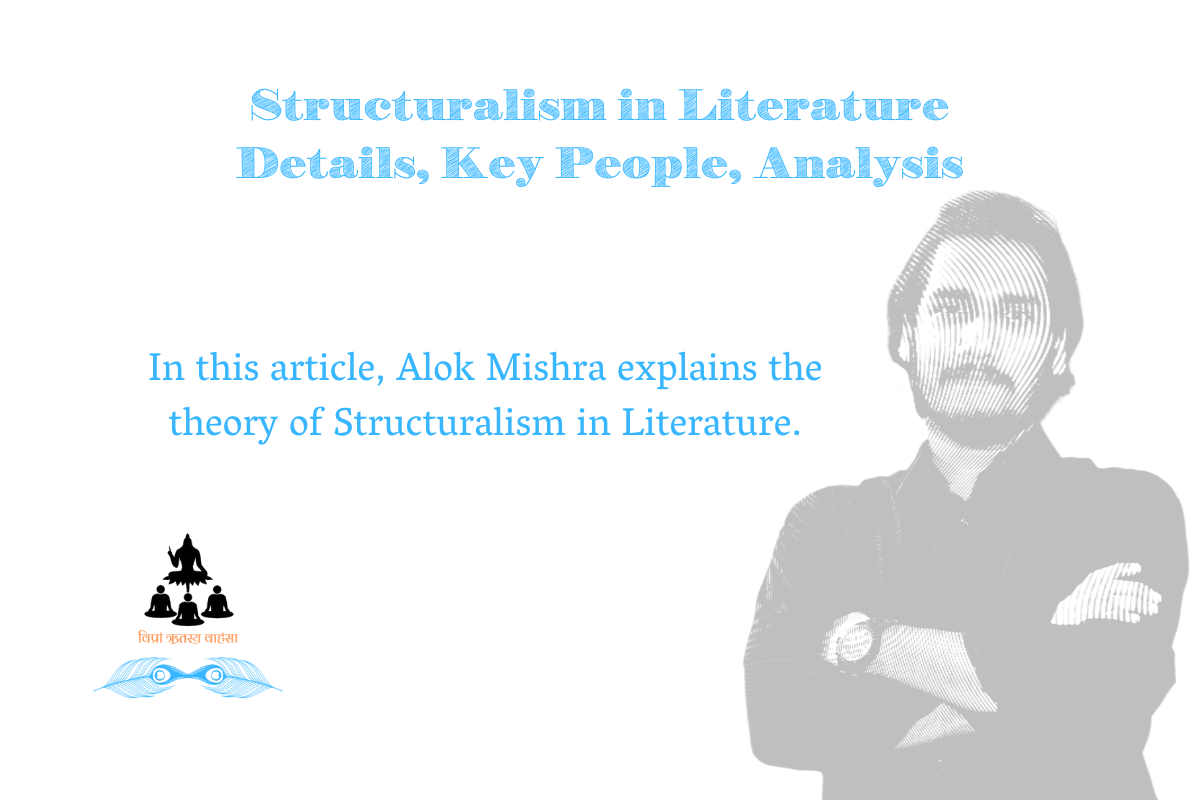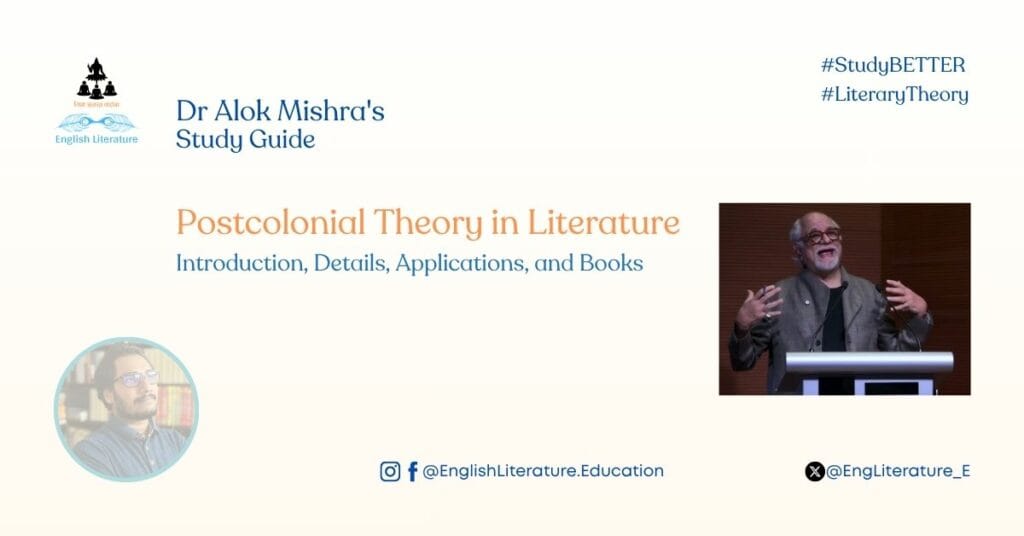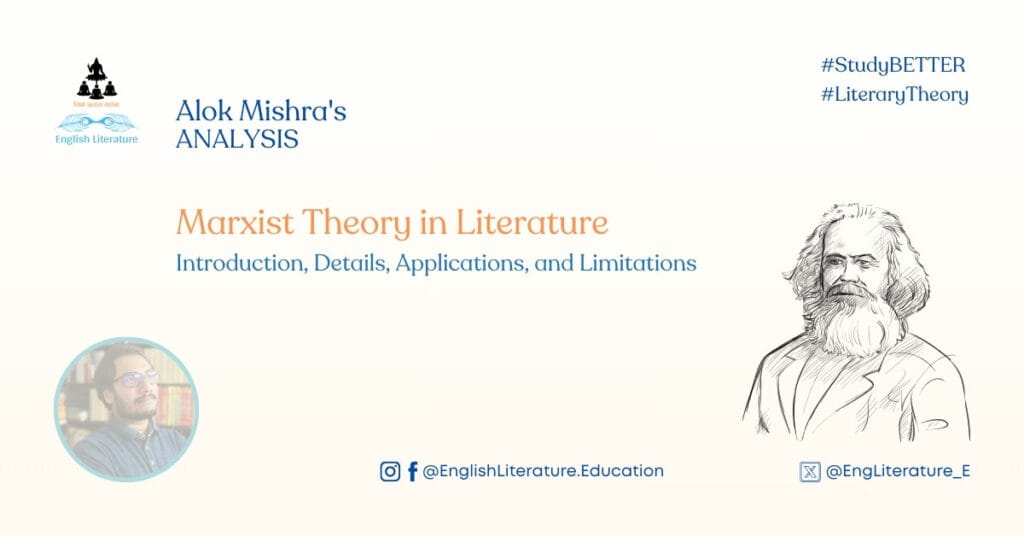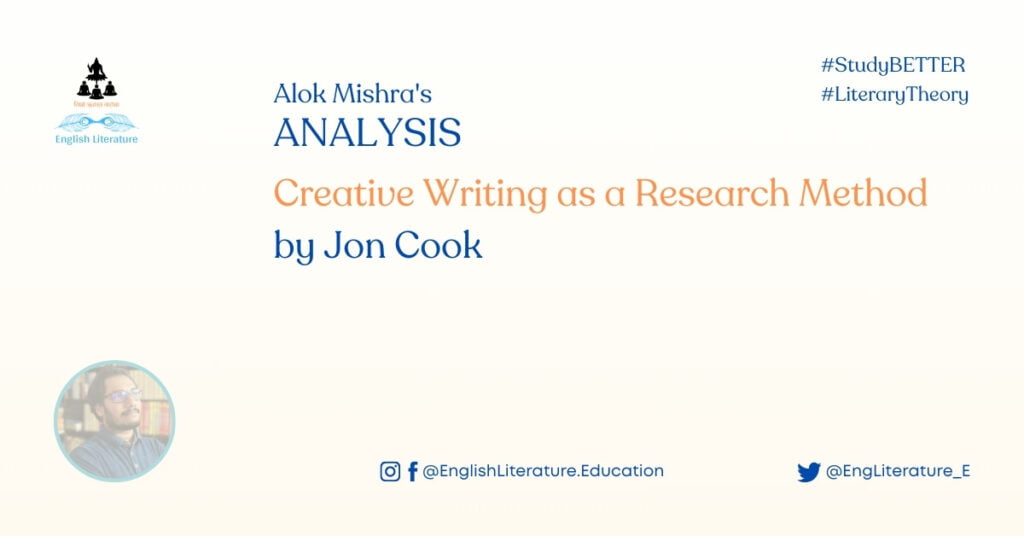This article will tell you about Structuralism. You will learn the definition, basic and advanced details, associated literary figures, a detailed timeline associated with Structuralism as literary theory, and the relevance of this school of thought in the present time. You will also find suggestions for further reading, the best books in this field of study and tips for mastering your knowledge in this area. Alok Mishra has written this article for the English Literature Education platform. Alok is a research scholar working on IEP, Indian English Poetry (finding Indianness in IEP).
Background info:
Structuralism is not a new subject for me. I have written about this school of literary theory on my personal website. However, that article was not academic. That was a simplified version for those who wanted to understand this theory in its simplest form. It is time I move ahead with the series “literary theory and criticism”. I will start with Structuralism as a literary theory. I will also add citations, notes and references wherever applicable. Here we go!
Brief Background to Structuralism in General:
In short, Structuralism is the school of thought that believes everything in the world belongs to a larger structure. The theorists of this school believe that one can study any individual item only by placing it in the context of the larger ‘structure’ to which it belongs. Structuralism, in general, did not begin as a literary movement. A few scholars believe that it originated from the tenets of the Russian school of Formalism. (ref Literary Theory: The Basics by Hans Bertens) However, many scholars credit Ferdinand de Saussure for establishing the Structuralists’ School of Theory. Saussure’s main concern was with the idea that no word can have its independent definition. In his seminal work, Course in General Linguistics, he proposed that the definition of a particular word is contingent upon other words (in the larger structure). He devised the excessively debated terms langue and parole.
Click to know more: Langue and Parole.
—————————————–
Quick facts section:
In simple terms, what is Structuralism? An ism that has to do something with structure, can we say that? Sure. Then, the question arises, what is Structuralism in literary theory? In other words, what is Structuralist theory in literature? You may refer to the book Beginning Theory by Peter Barry to understand the basics of Structuralism and its significance in literature. However, the description (below) will help you gauge Structuralism from various perspectives.
Simple Definition in General:
Structuralism deals with a scientific process of identifying and analysing the codes, the forms, the signs, the systems and the symbols embedded in social and cultural practices. Structuralists believe that visible practices have deeper meanings that one can only uncover by understanding the signs and symbols associated with them.
Structuralism in Literary Theory or Structuralist Theory in Literature:
In literature, the primary task that Structuralist theorists look for is to find the patterns, symbols, layers of the narrative, the framework of the plot, or similarities in the content with previously published works. Linguistic analysis of the text aims at the relationship between words and social practices (not very popular today). Structuralist criticism that deals with the formal or narrative-based analysis of the text concerns finding patterns and sequences that recur in previously published texts.
Literary figures often featured in questions related to Structuralism are Roland Barthes, Jonathan Culler, Gérard Genette, Saussure, Roman Jakobson, Umberto Eco, and Vladimir Propp.
—————————————–
The Details:
The early seeds of Structuralism in literature fell from the hands of Claude Lévi-Strauss. However, it was not entirely literary. Lévi-Strauss, an anthropologist, interpreted the Greek myth of Oedipus in the light of a structuralist outlook. He proposed that the myth of Oedipus had no meaning unless one saw it as one episode in the sequence of myths related to the city of Thebes. Lévi-Strauss further proposed the discovery of motifs, repetition of motifs and reemerging contrasts. And thus, the anthropologist contracts the Myth of Oedipus to the superstructure of certain recurring fundamental oppositions in the Greek Myths: animal/human, stranger/relation, husband/son (ref Beginning Theory by Peter Barry, p45). It led to the concept of dyadic pairs in literary texts that connote symbolic, thematic and archetypal resonance (Barry, 2010: 45). These dyadic pairs reflect contrasts in the text like art versus life, man versus woman, vision versus conspiracy, and others.
Graduation into the world of literary theory:
Early attempts by Claude Lévi-Strauss introduced literary ‘gamblers’ to an all-new dimension of literary interpretation. Please don’t offend yourself with the unexpected use of the word in the essay. You will understand later who might be the literary gambler. Anyways, not only Lévi-Strauss, a few prominent names contributed to the development of Structuralism as a literary theory. Popular associations with Structuralism are Roland Barthes, Gerrard Gennette, Vladimir Propp, Jonathan Culler, Algirdas Julien Greimas, and a few others I discussed above. In the section below, I will mention these names with the ideas they furthered (and notable contributions to the Structuralism theory they made).
Important Names in Structuralism and Their Contributions to the Development of the Theory:
- Ferdinand de Saussure (Switzerland) – Saussure was a linguist. It is a general perception that he laid down the foundations on which the theory of Structuralism stood. His phenomenal book Course in General Linguistics offered many scholars a chance to look at literature from an entirely new point of view. Saussure, however, focused more on language in general. He is also the originator of the concept ‘signifier and signified’ that we often find while reading about Structuralism, Deconstruction, and other literary theories. Keywords: sign, signified
- Yury Lotman (USSR) – Celebrated author of Analysis of The Poetic Text (1975), Lotman wrote many other books on ‘signs’ that Saussure proposed. He believed that literary texts carry more value as they have a ‘higher information load’. (Selden, Widdowson, Brooker 65).
- Maria Corti, Caesare Segre, Umberto Eco (Italy) and Michael Riffaterre (France) – They were influential figures in the field of literary semiotics. The preoccupation with linguistic analyses of literature, occasionally, other than the investigation of the sign system in language, was the work they did. Keywords: semiotics
- Roland Barthes (France) – Where don’t you find Barthes? A student of literary theory knows the pain! Barthes is everywhere. His legacy has mingled beautifully with the pages of books on literary theory. S/Z, The Semiotic Challenge, Elements of Semiology, and The Empire of Signs were his significant contributions to the Structuralist discourse in literary theory. Barthes studied fashion, popular culture and Mythology in the light of Structuralism.
- Vladimir Propp (Russia) – Propp offered the first comprehensive ‘structure’ that could elicit the framework of a work of literature. Taking forward the ideas of Todorov, he analysed the Russian Fairy tales and detailed the structure that was present in all those stories. The protagonist becomes the subject. The actions of the protagonist are functions. Propp listed 31 functions. All the functions, he argued, followed a logical sequence.
- Algirdas Julien Greimas (Lithuania, France) – Better known as A J Greimas, he took Vladimir Propp’s ‘structure’ one step ahead. Greimas proposed ‘three pairs of binary oppositions’. These pairs offer an understanding of any work of literature in terms of the following pattern: Subject/Object, Sender/Receiver, Helper/Opponent. Further, Greimas ascribe a few associations to these patterns in the following manner: Desire, Search or Aim (Subject/Object), Communication (Sender/Receiver), Auxilliary Support or Hindrance (Helper/Opponent). Ideally, this pattern does exist at the core of literary works.
- Claude Lévi-Strauss (France) – Lévi-Strauss had more interest in structural patterns than narrative sequence. He devised mythemes, the units of myth. He attempted a structuralist interpretation of Greek myths, especially Oedipus. Strauss proposed that individual tales from the corpus of myths did not have distinguished meaning. One could understand, Strauss emphasised, any tale from the Myths only by locating the tale against the body of Myths.
- Tzvetan Todorov (Bulgaria) – Todorov was one of the most influential critics in the field of Narratology (a version of Structuralism that focuses more on the narrative as a whole). He proposed a general ‘grammar’ of literature. He brought to the attention the basic unit of the narrative, propositions. Todorov suggested that a narrative has many sequences, a sequence contains propositions, and a proposition, he argued, could be an agent (subject) or action (predicate). His ideas were close to Formalism. Nevertheless, Todorov went beyond the strict measures of form. He also described that a sequence has five propositions – Equilibrium, Force, Disequilibrium, Force, and Equilibrium. Keywords: narrative syntax
- Gérard Genette (France) – Perhaps the most convincing, organised and authoritative Structuralist theorist of all, Gérard Genette, gave new dimensions to the study of the narrative. Genette proposed that a narrative has three levels – story, discourse and narration. He also devised the utility of tense, mood and voice to study the dimensions of a narrative.
- Jonathan Culler (America) – Jonathan Culler focused on discovering unity in the text. Though his celebrated work puts various aspects of structuralist theory in front of the readers with clarity in Structuralist Poetics, Culler tried to shift the responsibility of decoding the text to the readers rather than indulging in finding patterns in the text. Langue for him becomes competence, and parole turns into performance (Noam Chomsky). Culler relies on the ‘skills’ of the skilled readers. Culler looks for patterns in the interpretations of texts rather than looking for them in the writers’ endeavour.
A few points you will find interesting:
- A structuralist tries to juxtapose the literary text against a giant structure – the corpus of literary works in a genre, a complex set of probabilities, a set of ideas, the body of mythological works in any or many languages, etc.
- Commonly, Structuralist analyses of literary texts ignore the authors, their history, the individuality of the text itself, and anything subjective.
- Structuralism in literature has its roots scattered in Russia and France. It flourished in the 60s and 70s in Europe and the USA. Structuralism as a literary theory could not continue for long because of the idea of rejecting the author (and cancelling the individual qualities of the text – the humane qualities).
My Opinions:
The thematic or structuralist study that bases itself on the narrative analysis of the literary texts makes sense to me. It is interesting to assign code names to characters and find out what happens. For instance, let us find out the structure of Thomas Hardy’s famous novel Far from the Madding Crowd.
Gabriel Oak is X.
Bathsheba is Y.
Boldwood is Z.
Troy is V.
X falls in love with Y. Y rejects X. X keeps loving Y. Y amuses herself with Z. V fascinates Y. Y marries V. Z murders V. Z goes to jail. Y comes back to X.
Resultant – with all the chaos in between, X marries Y in the end.
Now, find out how many novels are there with a similar plot.
The problem with such an analysis is we miss everything at the cost of revealing what is beneath the skin. Isn’t it? The author doesn’t get the due. Emotions, ideas, creation of the scenes, expression of the characters, romance, sorrows, conflicts, sympathy, empathy, agony, envy and many other things go for a toss. Is Structuralism in literature necessary? Don’t we all human beings have the same composition? However, with a negligible difference in DNA, we are all unique. And we express, even similar emotions, with uniqueness. And therefore, cancelling the authors altogether cannot even resonate with me.
Further Reading:
Read Barthes, Culler and Gérard Genette to understand Structuralism in detail.
Structuralist Poetics by Jonathan Culler
The Pursuit of Science by Jonathan Culler
Barthes: A Very Short Introduction by Jonathan Culler
Narrative Discourse by Gérard Genette
Figures of Literary Discourse by Gérard Genette
S/Z by Roland Barthes
The Empire of Signs by Roland Barthes
Introduction to the Structural Analysis of the Narrative by Roland Barthes
List of References:
Barry, Peter. Beginning Theory. Viva Books Private Limited, 2010, New Delhi.
Bertens, Hans. Literary Theory: The Basics. Routledge, 2014, New York.
Selden, Raman., et al. A Reader’s Guide to Contemporary Literary Theory. Pearson Longman, 2005, Harlow (UK).
Previous Article: Types of Literary Theory
Next Article: Deconstruction





13 Comments. Leave new
First of all , I’mdeeply grateful for your compassion and guidance.
Thank you so much!!
Sir, I’m still struggling to understand this theory. Could you please clarify/explain it further?
It is very helpful… I have a paper tomorrow and no article could help me like this one did. Thanks again! Keep doing the great work guys!
This modernism has killed the essence of literature directly or indirectly. Every individual or writer has its own unique way of presenting its work. But this is so-called modernist rascals has taken credit by analysing its negative, useless concepts and theory squeezing out every emotions with ill-minded rational interpretation.
For instance, Hamlet by Shakespeare is a good tragedy. It was beautiful and still. But T.S Eliot saw only the negative aspects and therefore introducing the concept of objective co-relative.
And today the modernist are analysing the stars on how to shine at daylight. Instead of appreciating the beauty and lights that sparkle throughout the night.
Thankyou!
Thank you for this wonderful article on Structuralism in English literature. It really helped me. I can say that I do have an idea and understanding of this school of thought now.
This is a very helpful article… I was messed up about structuralism in literary context. Barthes makes it more difficult. Your article helped me a lot. Many thanks! I will read other articles on this platform as well.
This is a wonderful article for anyone wanting to know more about structuralism in English literature. Simple and easy to understand without any perplexing points as we find in the books like the one by Patricia Waugh. Ideal for beginners… thanks a lot!
Wonderful article! I spent many hours searching for something light, uncluttered and simple to understand structuralism in literature. This article helped me a lot! Recommended for students of English literature.
I have been so enlightened.
Thanks.
Very helpful. Thanks for this informative article on structuralism literary theory. It helped me a lot.
Wonderfully written! I enjoyed it. Other articles may bore you down or confuse you. Thanks for writing with the fun quotient intact. I am sure this article will help the students understand the theory of structuralism very well. Please write about the next theory as soon as possible.
That’s some encouraging appreciation, Vaibhav! Many thanks for reading the article and we hope to keep doing our bit always. Keep exploring and all the best!
Wonderfully explained! Anyone who wants yo understand structuralism should read this article by Alok. Really helping one. Thanks
Thank you very much, Kalpana! Great to know it could help you understand the concept. Keep reading more. Best wishes!